What are straight router bits? |
||||
 |
||||
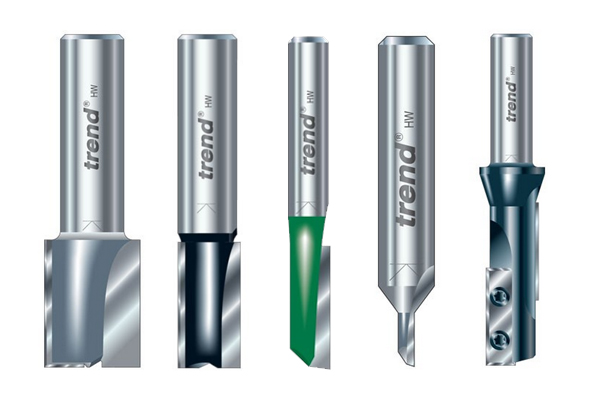 |
Straight router cutters have straight bodies and typically one or two flutes. They are the most common type of cutter and are designed to produce flat-bottomed grooves for a wide range of applications.
Examples of straight router cutters include single flute, multiple flute, pocket cutters, and mortisers. For details, see: |
|||
Design |
||||
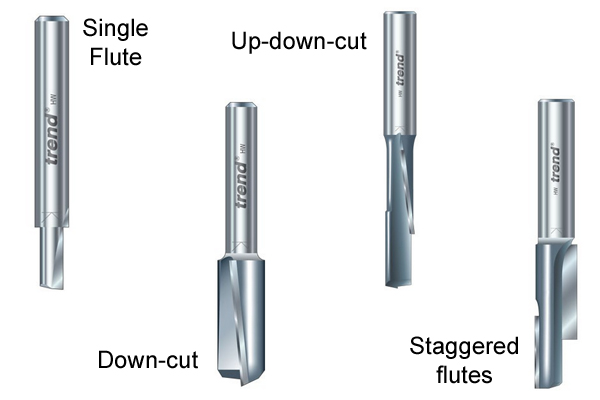 |
FlutesStraight router cutters typically have one, two, or three flutes in a number of designs including down cut, up-down cut, or stagger-tooth. Working with harder or more brittle materials (hardwoods, plastics etc.) often requires more flutes. Faster, rougher work in soft materials (softwoods) requires fewer flutes. Some straight bits have a shear angle of flutes, which makes for a much smoother cut. |
|||
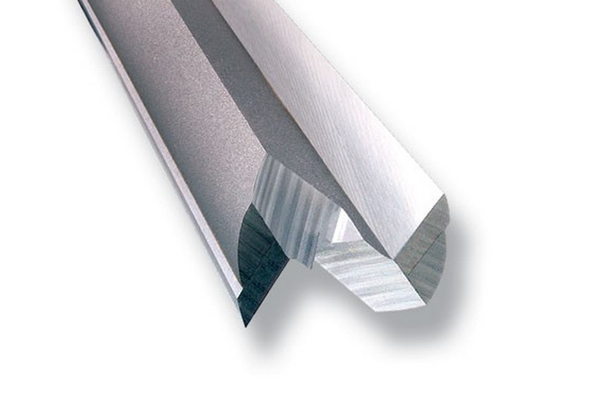 |
Bottom cutSome straight cutters have a TCT central cutting tip or cutting edges extending across their base, allowing them to be used in a plunge router to cut into the surface of materials.
If you are unsure, check product specifications before attempting to use a cutter in this manner. |
|||
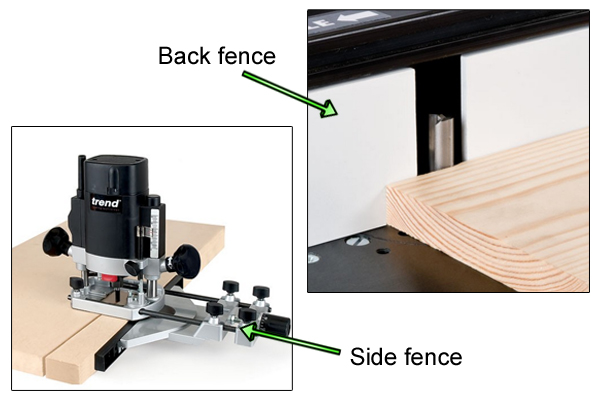 |
GuidesStraight router bits do not usually have a guide pin or bearing, and so require a side fence, back fence, or another device, in order to guide them, though they can also be used freehand for some specialist applications. |
|||
 |
||||
ApplicationsBelow are some of the most common applications for which straight router cutters are used. |
||||
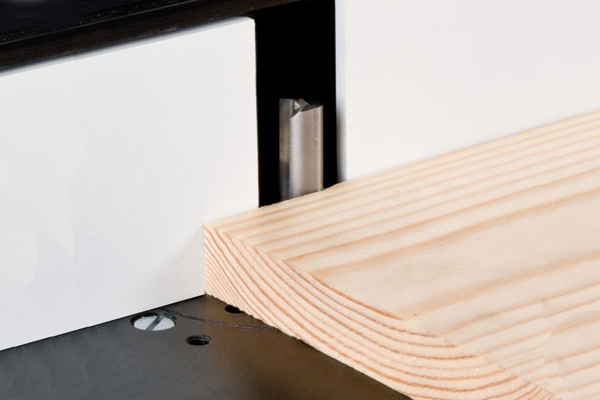 |
Trimming and cutting straight edgesAfter your material has been roughly cut to size with a circular saw or another similar tool, a straight router cutter can be used to trim, straighten, or simply tidy up a rough edge. |
|||
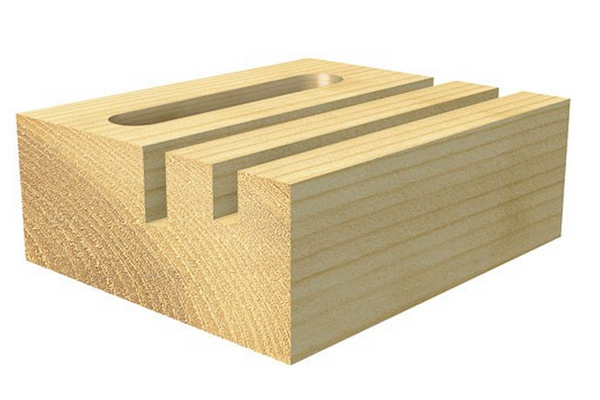 |
Cutting grooves and housingsStraight router bits are possibly most commonly used to cut flat-bottomed grooves. Grooves and housings are needed for many woodworking applications and straight router cutters are the perfect tools to cut them. Small diameter straight cutters with bottom cut are ideal for routing the grooves needed for inlays. |
|||
 |
Producing rebatesRebates are used in a wide variety of applications; one example is in the construction of lap joints. |
|||
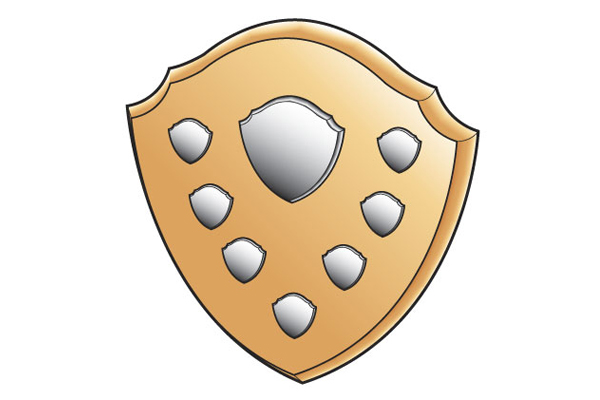 |
Template workWhen used with a guide bush of the correct size, a straight router cutter can follow a template to produce curved or irregularly shaped workpieces, or create a custom sign or plaque. A straight router cutter is often used with a template for lettering or numbering applications. |
|||
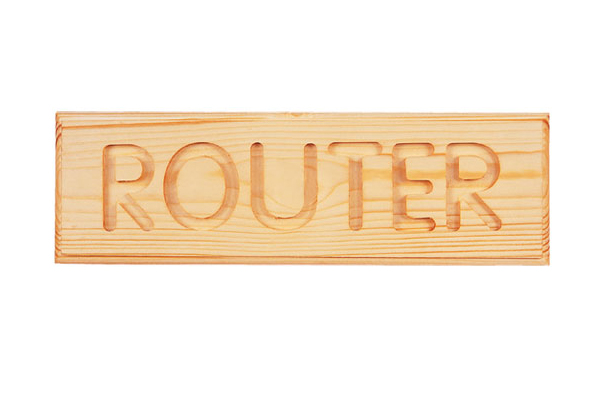 |
Freehand workStraight router cutters can also be used freehand for lettering and other applications. |
|||
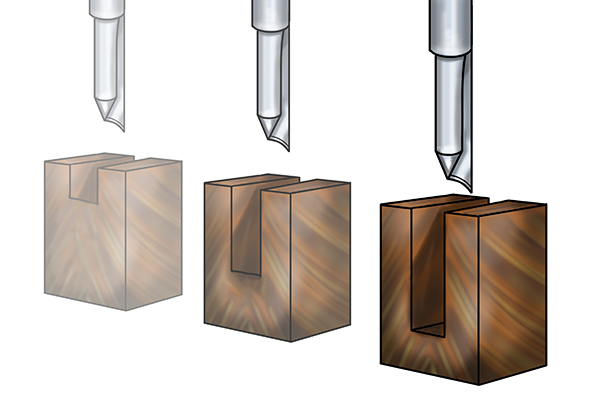 |
Plunge-cuttingIf a straight router cutter has a central tip it can be used in a plunge router to cut mortises or produce holes for a wide range of jobs. You can make your very own router cutter storage tray with a straight cutter as it can be used much like a drill bit, to cut holes in different materials, when used to plunge cut. Cutters with this feature don't need to start cutting from an edge and which means they can be used to cut grooves for things such as inlays. |
|||
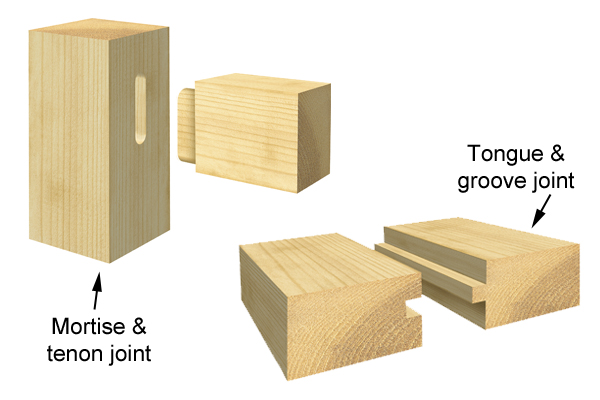 |
Joint-makingStraight router cutters are able to cut the parts needed for various joints, such as tongue and groove joints, mortise and tenon joints, lap joints, and halving joints. |
|||
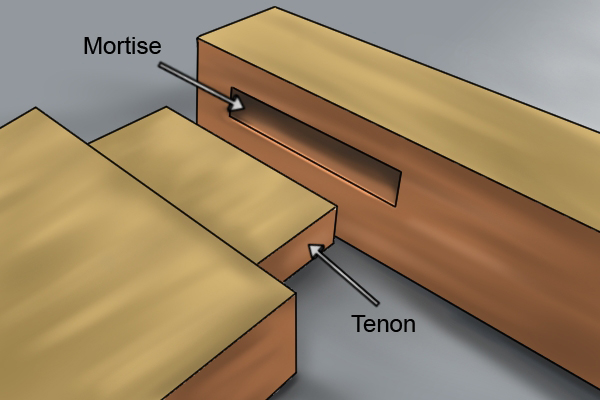 |
Mortise & tenon jointMortise and tenon joints are commonly used in furniture-making. A tenon is a projecting piece of wood that fits into a mortise, which is a recess cut into another piece of wood. The tenon must fit tightly into the mortise in order to create a secure joint. A mortise and tenon joint requires careful and precise cutting and can be done with a straight router bit or a tenon saw. |
|||
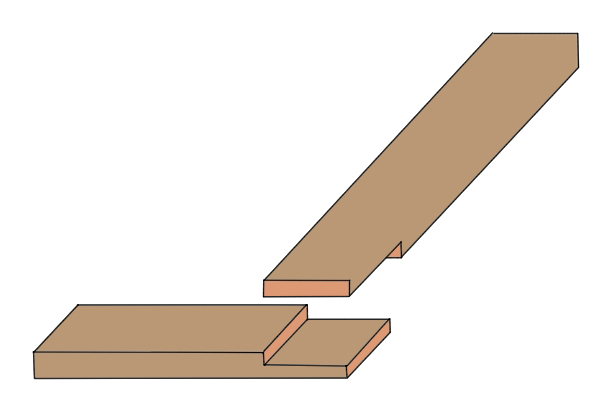 |
Lap jointSimply put, a lap joint involves joining two materials by overlapping them. There are several different types of lap joint, depending on how thick you want the joint to be. Lap joints can be created in wood, plastic, or metal with the right type of straight router cutter. |
|||
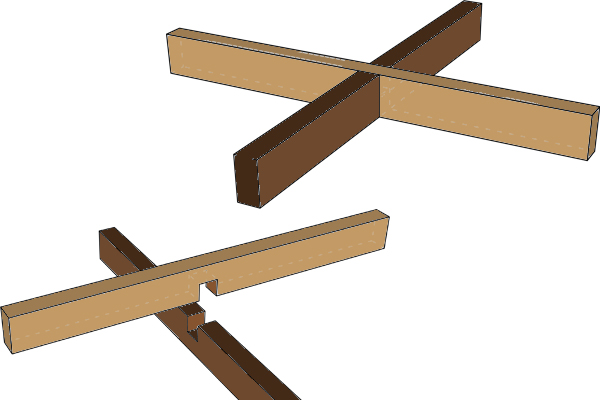 |
Halving jointHalving joints, or halved joints, are generally used in framework constructions. They comprise of two grooves that interlock and are usually fixed together with adhesives and sometimes nails or screws. The grooves are usually cut at half the thickness of both pieces of timber to be joined so they interlock by bother pieces passing through each other and then sitting flush. |
|||
 |
||||
RangesStraight router cutters are available in the following Trend ranges: |
||||
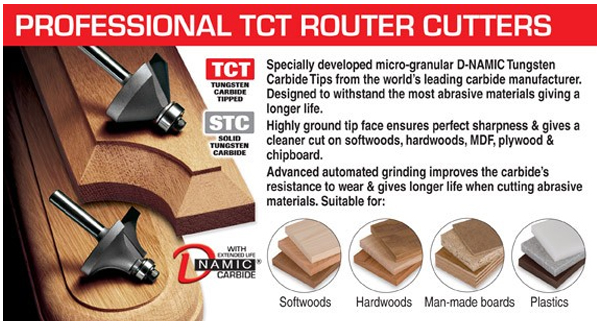 |
||||
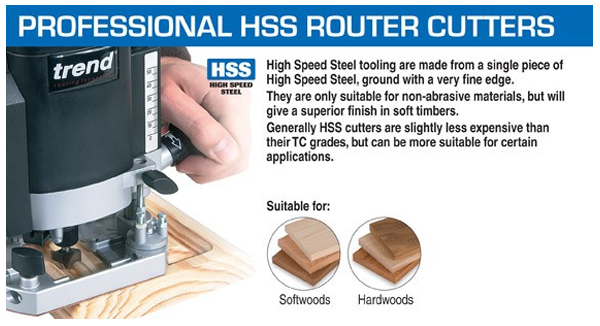 |
||||
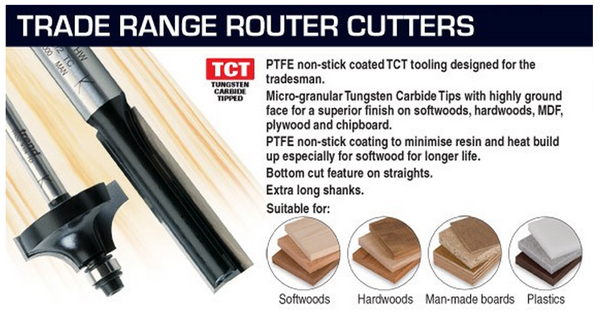 |
||||
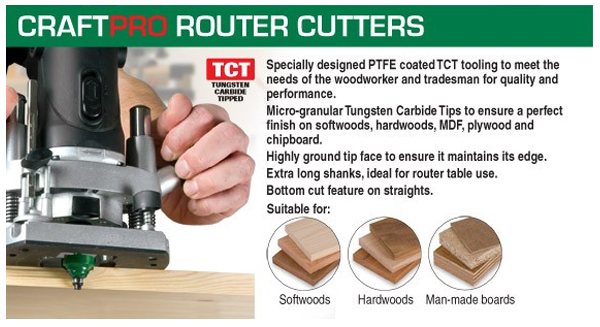 |
||||
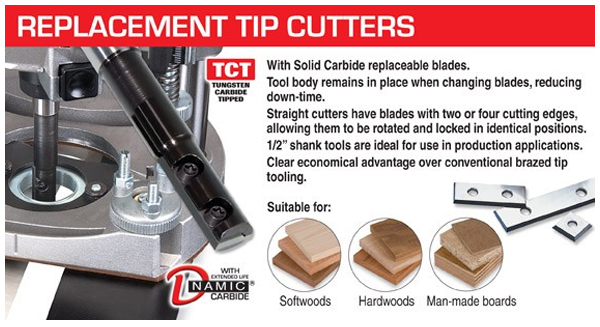 |
||||
 |
||||







